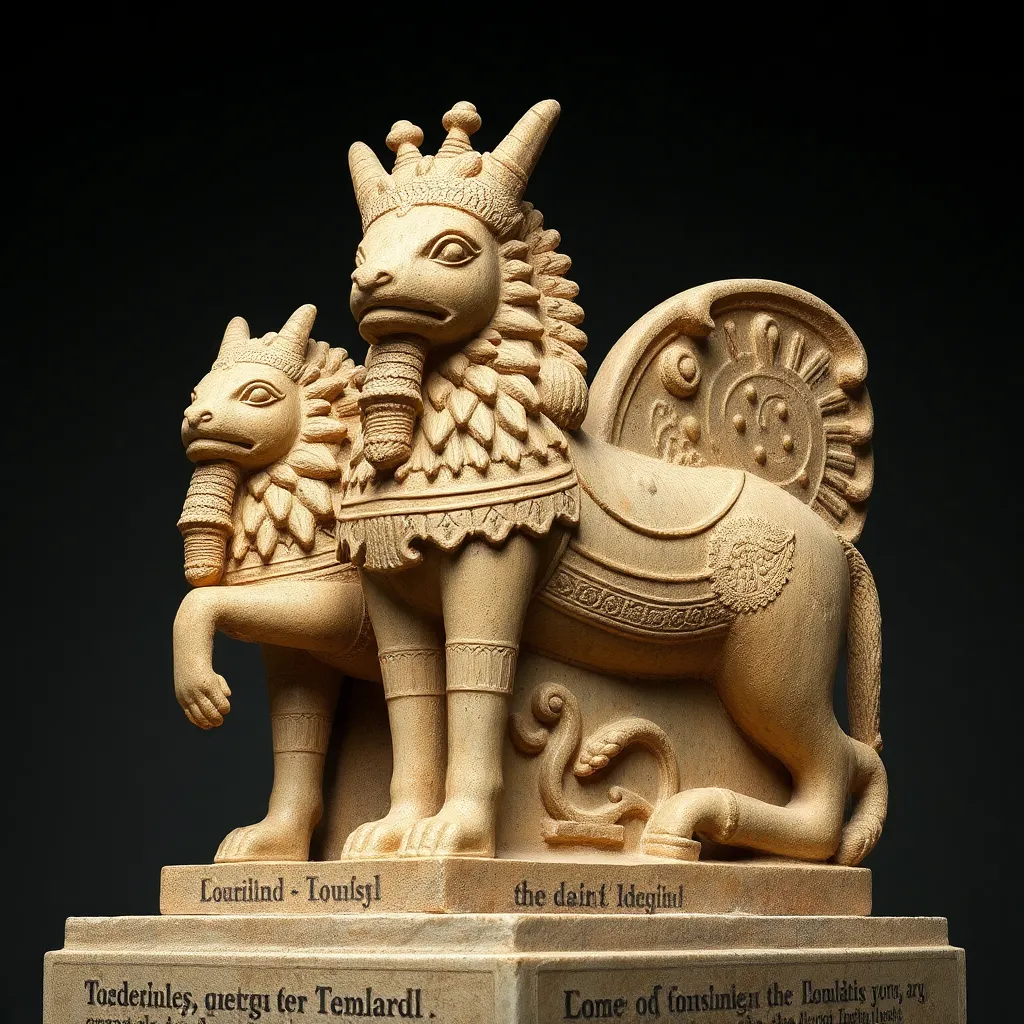The Lamassu in Sasanian Art: A Glimpse into Persian Artistic Expression
I. Introduction
The Lamassu is a mythical creature that has captivated the imagination of historians and art enthusiasts alike. Typically depicted as a hybrid of a human, bull, and bird, these imposing figures served not only as guardians but also as symbols of power and protection in the ancient Near East. In the context of ancient Persian culture, particularly during the Sasanian Empire, the Lamassu held profound significance, representing a fusion of artistic traditions and cultural values.
This article aims to explore the Lamassu’s role in Sasanian art, examining its historical context, characteristics, architectural significance, artistic techniques, and thematic elements. Through this exploration, we will uncover the enduring legacy of the Lamassu in Persian artistic expression.
II. Historical Context of Sasanian Art
The Sasanian Empire, which thrived from 224 to 651 CE, was a significant period in Persian history characterized by extensive cultural, political, and artistic developments. Emerging after the fall of the Parthian Empire, the Sasanians sought to establish a centralized state that would promote Zoroastrianism and Persian identity.
Prior to the Sasanian era, Persian art was heavily influenced by the Achaemenid Empire and the surrounding cultures, including Greek and Indian artistry. This rich tapestry of influences would come to define Sasanian artistic expression, which blended traditional motifs with innovative techniques.
Art played a crucial role in Sasanian society, serving both political and religious functions. The depiction of royal power and divine protection in artistic forms was essential for legitimizing authority and reinforcing the state’s ideology.
III. Characteristics of Lamassu
The Lamassu is characterized by its unique physical attributes, often depicted with the body of a bull or lion, the wings of an eagle, and a human head. This combination not only emphasizes strength and majesty but also represents a bridge between the mortal and divine realms.
- Physical Features: The Lamassu typically features a bearded human face, large feathered wings, and powerful animal limbs, embodying a sense of awe and reverence.
- Symbolism: Lamassu figures symbolize protection, strength, and the safeguarding of sacred spaces, often positioned at entrances to temples and palaces.
- Comparison with Earlier Representations: While Lamassu can be traced back to Assyrian and Babylonian art, Sasanian interpretations added unique stylistic elements, such as intricate detailing and more pronounced facial expressions.
IV. The Role of Lamassu in Sasanian Architecture
In Sasanian architecture, Lamassu figures were strategically placed to serve as guardians of significant structures. Their imposing presence not only deterred potential threats but also signified the divine protection bestowed upon the inhabitants of these spaces.
Specific examples of Lamassu in Sasanian architecture include:
- Palaces: Lamassu were often located at the entrances of royal palaces, such as the grand palace at Ctesiphon, where they symbolized the power and authority of the king.
- Temples: In Zoroastrian temples, Lamassu served as protectors of sacred spaces, reinforcing the connection between divinity and the earthly realm.
- Urban Integration: The placement of Lamassu in public spaces contributed to the overall urban landscape, creating an atmosphere of reverence and grandeur.
V. Artistic Techniques and Materials
The creation of Lamassu sculptures involved various materials and techniques, reflecting the artistic innovations of the Sasanian period. Commonly used materials included:
- Stone: Limestone and sandstone were frequently employed for their durability and ability to be intricately carved.
- Metal: Bronze and other metals were used for smaller sculptures, showcasing detailed craftsmanship.
Sasanian artists applied advanced techniques in their work, including:
- Relief Carving: Many Lamassu figures were carved in high relief, allowing for dramatic shadow play and depth.
- Polychromy: The use of vibrant colors enhanced the visual impact of Lamassu sculptures, making them more striking and lifelike.
The innovations in craftsmanship during this period were not only a testament to the skill of Sasanian artisans but also a reflection of the empire’s cultural sophistication.
VI. Thematic Elements in Sasanian Lamassu Art
Sasanian Lamassu art is rich with thematic elements that reflect the beliefs and narratives of the time. Notably:
- Mythological Themes: Many Lamassu figures depict mythological narratives that resonate with the spiritual beliefs of the Sasanian people.
- Zoroastrian Influence: The incorporation of Zoroastrian symbols and themes highlights the religion’s importance in shaping Sasanian artistic expression.
- Natural and Supernatural Interplay: The blending of natural and supernatural elements in Lamassu art reflects the belief in a world where divine forces interact with the earthly realm.
VII. Legacy and Influence of the Lamassu
The Lamassu has had a lasting impact on Persian art and architecture, influencing subsequent artistic movements and styles. Its legacy can be observed in the following ways:
- Later Persian Art: The motifs and symbolism of Lamassu continued to inspire artists in the Islamic period and beyond, integrating into various architectural forms.
- Modern Resurgence: In contemporary times, there has been a renewed interest in Lamassu, with artists and scholars exploring its significance within Persian culture.
- Contemporary Representations: The Lamassu continues to be a powerful symbol of Persian identity, often featured in art, literature, and popular culture.
VIII. Conclusion
In summary, the Lamassu holds a pivotal place in Sasanian art, embodying the rich cultural heritage and artistic achievements of the Persian Empire. Through its unique characteristics, architectural significance, and thematic depth, the Lamassu represents a synthesis of mythology, religion, and artistry that resonates through the ages.
The enduring significance of Lamassu in Persian artistic expression invites further exploration and research, encouraging us to delve deeper into the cultural implications of Sasanian art and its relevance in today’s world.



